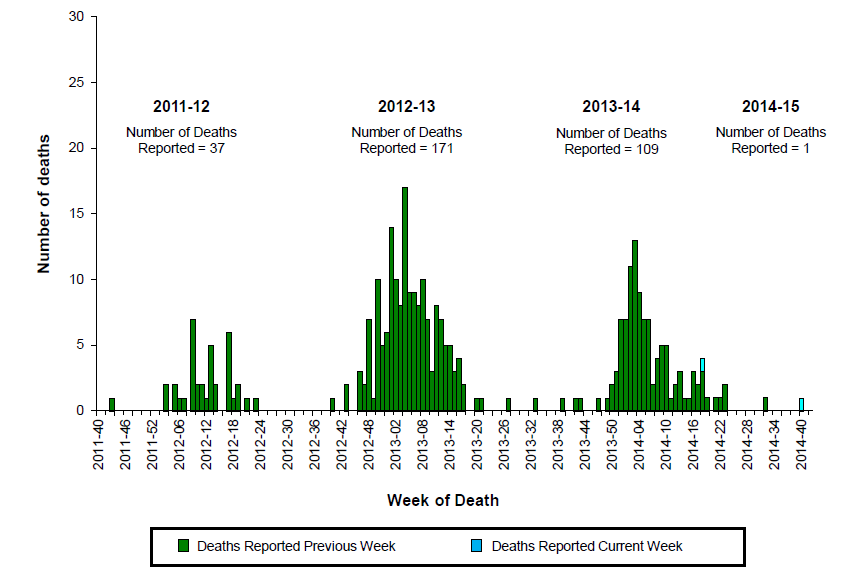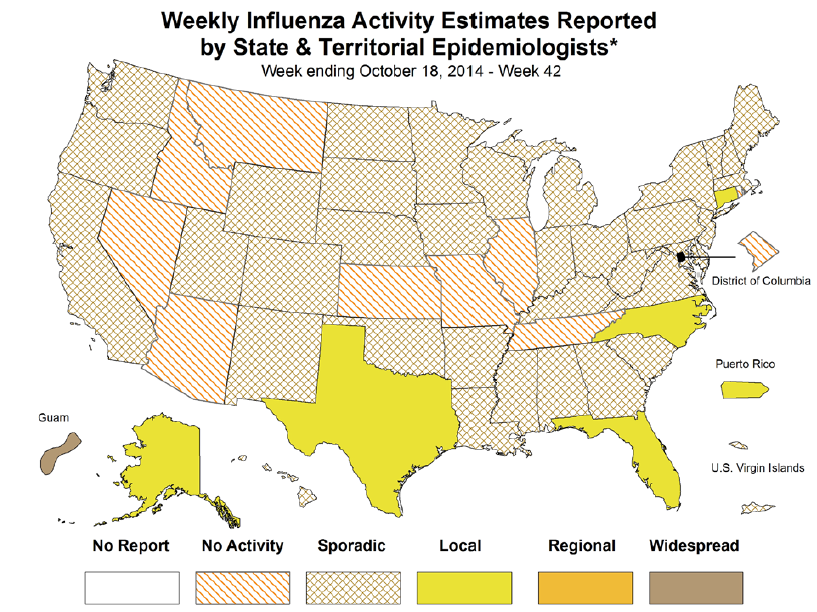Influenza epidemiology and demographics: Difference between revisions
| Line 75: | Line 75: | ||
==Worldwide Influenza== | ==Worldwide Influenza== | ||
==References== | ==References== | ||
Revision as of 14:32, 28 October 2014
|
Influenza Microchapters |
|
Diagnosis |
|---|
|
Treatment |
|
Case Studies |
|
Influenza epidemiology and demographics On the Web |
|
American Roentgen Ray Society Images of Influenza epidemiology and demographics |
|
Risk calculators and risk factors for Influenza epidemiology and demographics |
Editor-In-Chief: C. Michael Gibson, M.S., M.D. [3]; Associate Editor(s)-in-Chief: Alejandro Lemor, M.D. [4]
Overview
Epidemiology and Demographics
Prevalence
Incidence
Gender
Age
- Influenza viruses cause disease among persons in all age groups.
- Rates of infection are highest among children, but the risks for complications, hospitalizations, and deaths from influenza are higher among persons aged 65 years and older, young children, and persons of any age who have medical conditions that place them at increased risk for complications from influenza.
- During 1990--1999, estimated average rates of influenza-associated pulmonary and circulatory deaths per 100,000 persons were:[1]
- 0.4-0.6 among persons aged 0-49 years
- 7.5 among persons aged 50-64 years
- 98.3 among persons aged 65 years and older.
Complications
Influenza in the United States
National and Regional Summary of Select Surveillance Components
| HHS Surveillance Regions | Out-patient ILI† | % positive for flu‡ | Number of jurisdictions reporting regional or widespread activity§ | 2009 H1N1 | Type A (H3) | Type A (Subtyping not performed) |
Type B | Pediatric Deaths |
|---|---|---|---|---|---|---|---|---|
| Nation | Normal | 4.8% | 1 of 54 | 7 | 267 | 405 | 392 | 1 |
| Region 1 | Normal | 1.6% | 0 of 6 | 0 | 8 | 8 | 4 | 0 |
| Region 2 | Elevated | 1.1% | 0 of 4 | 1 | 17 | 17 | 11 | 0 |
| Region 3 | Normal | 1.7% | 0 of 6 | 0 | 16 | 16 | 69 | 0 |
| Region 4 | Normal | 8.0% | 0 of 8 | 0 | 56 | 290 | 246 | 1 |
| Region 5 | Normal | 2.1% | 0 of 6 | 3 | 28 | 15 | 12 | 0 |
| Region 6 | Normal | 4.3% | 0 of 5 | 2 | 32 | 26 | 69 | 0 |
| Region 7 | Normal | 1.9% | 0 of 4 | 0 | 12 | 15 | 9 | 0 |
| Region 8 | Normal | 1.2% | 0 of 6 | 0 | 15 | 5 | 6 | 0 |
| Region 9 | Normal | 3.2% | 1 of 5 | 1 | 27 | 27 | 19 | 0 |
| Region 10 | Normal | 5.5% | 0 of 4 | 0 | 56 | 4 | 7 | 0 |
|
*HHS regions (Region 1 CT, ME, MA, NH, RI, VT; Region 2: NJ, NY, Puerto Rico, US Virgin Islands; Region 3: DE, DC, MD, PA, VA, WV; Region 4: AL, FL, GA, KY, MS, NC, SC, TN; Region 5: IL, IN, MI, MN, OH, WI; Region 6: AR, LA, NM, OK, TX; Region 7: IA, KS, MO, NE; Region 8: CO, MT, ND, SD, UT, WY; Region 9: AZ, CA, Guam, HI, NV; and Region 10: AK, ID, OR, WA). | ||||||||
 Image obtained from CDC [1] |
 Image obtained from CDC [2] |